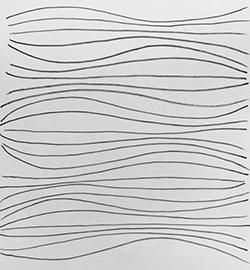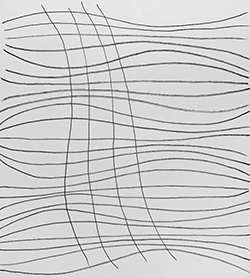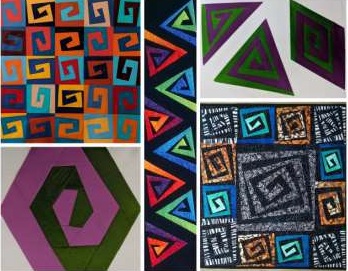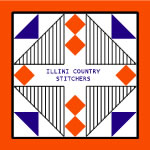Rachel Derstine and Mel Beach Classes
Artful Couching – Rachel Derstine

Supplies
- Striped Batik – 38” x 18” Google – Search: Patina Hand Paints or Stripe Batik
- Backing, facing and sleeve – 1 yard
- Batting – 38” x 18”
- A Fat Straw
- Stabilizer of your choice. I use Pellon 806 Stitch n’ Tear – 38” x 18” (We will be adding a layer of stabilizer into our quilt sandwich before basting it all together)
- Thread – these are what I like to use but you may have your own favorites
- Madeira – Super Twist #30 – 2 or more colors sitnsewfabrics.com
- Glide Thread quiltedjoy.com
- YLI Wonder Invisible Thread ylicorp.com
- Yarn Assorted colors to match – 3 colors or more. Use worsted weight or use 2-3 strands together to match that weight paradisefibers.com
- Fray Check by Dritz
- Rotary Cutter and Mat
- Scissors
- Chalk Board Chalk or your marking tool of choice to mark curvy lines if you wish
- Cording, open toe or couching foot: Bernina #21, #20, #1, or comparable foot for your brand of machine
- Walking foot for quilting.
In a 3 hour class you will do the following steps before arriving at class.
In a 6 hour class we will be doing these steps in class.
We will be making a quilt sandwich of (top to bottom) batik stripe fabric, stabilizer, batting and backing. We will baste these layers together. For basting, use large hand or machine stitches to sew all the way around the outer edge of the quilt. Starting in the middle, stitch straight lines to top, bottom and each side of the quilt. If you wish to get a head start on the quilting you will have more time to focus on couching during class.
Below is my drawing for suggested wavy lines for quilting. These can be done using your walking foot: |
Below are my suggested initial wavy lines for couching from top to bottom (we will be doing this in class): |
Below are examples of a spiral and a fiddleheads we will be couching (in class): |
 |
 |
 |
Free Styling & Spiraling - Mel Beach

These improv-pieced spiral designs are sure to mesmerize and energize!! We'll start with square spirangles and experiment with different design options and construction techniques. Then we'll explore new spirangle designs: rectangles, triangles, hexagons, and diamonds…oh my!!
Materials/Supplies Needed:
Fabric Requirements
- 3/4 yard each of 2 contrasting fabrics
- For more interest, you can add:
4 or more coordinating fat quarters and/or half yard cuts - 2.5” strips from a jelly roll and/or 10” squares from a layer cake
Fabric Selections
- Solids & small scale prints that read as solids will help your spiral designs pop!
- Consider including 1 or more zinger fabrics: stripes, dots and/or ombres (especially ones that gradually change in color/value from selvedge to selvedge)
Supplies
- Sewing machine in good working order with ¼" piecing foot
- Neutral piecing thread
- rotary cutter
- cutting mat 18" or larger
- 12" square ruler
- 6" x 24” ruler
- Iron & iron pad
OPTIONAL:
- Small camera/camera phone/tablet
- MaryEllen's Best Press—Fragrance Free
- 12" or 13" rotating cutting mat
- Creative Grid 60-degree Triangle (8.5” or 12.5”)
- 6" x 12"”" ruler
More variations and pictures of Free Styling & Spiraling are posted on my website: melbeachquilts.com/teaching/ Questions/concerns? Feel free to contact me via email: melbeach@melbeachquilts.com
